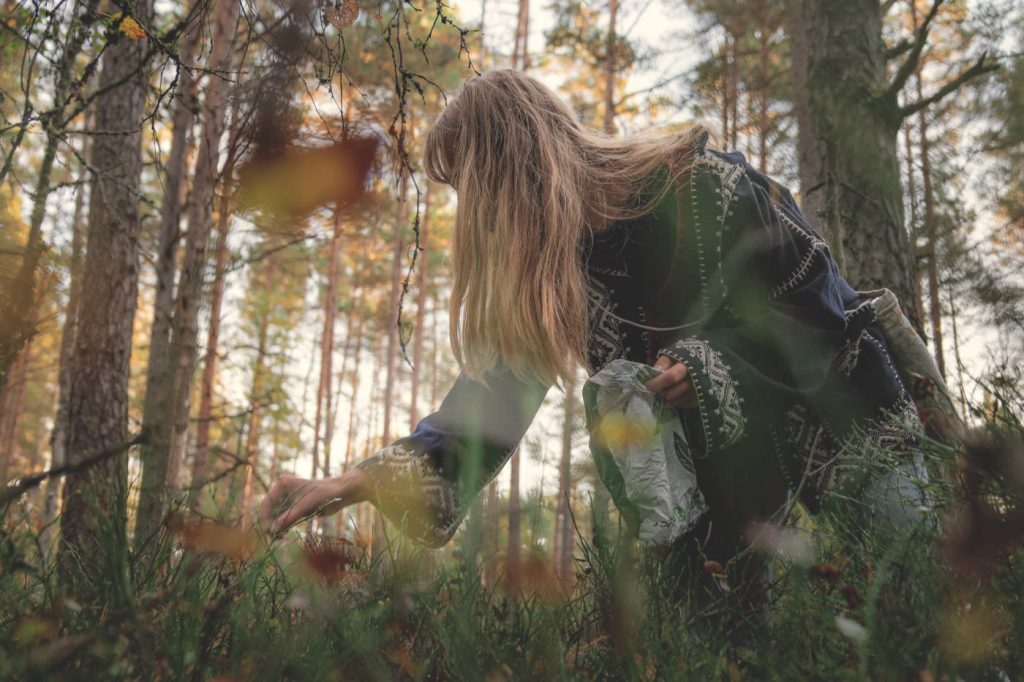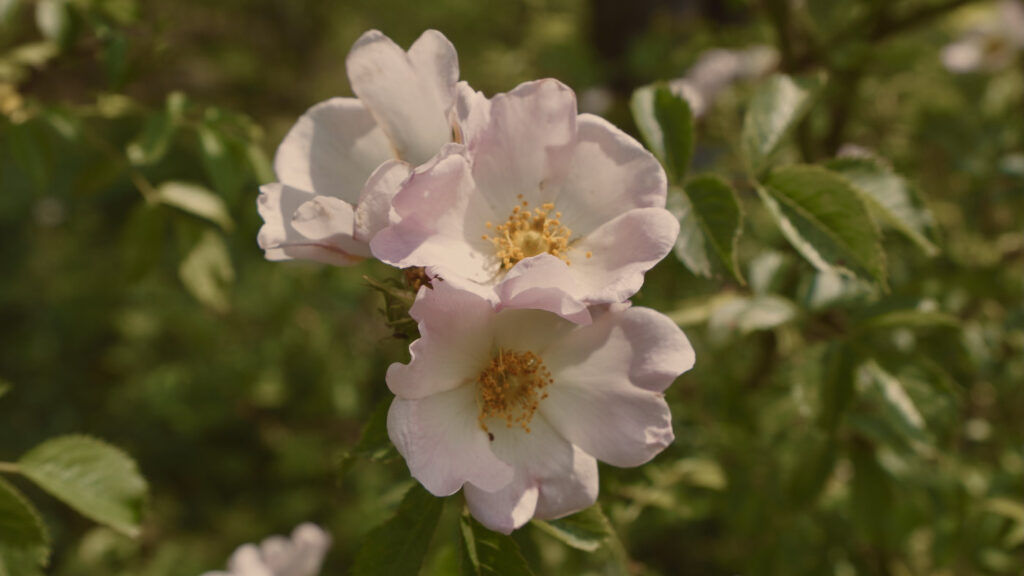In the midst of the cold, dark and somewhat dormant times of winter, there is joy and creativity to be found in the beautiful strong-standing evergreen trees. They give colour and life to the otherwise dull and grey nature we’re experiencing in the north at this time of year. Their scent enlivens the spirit from winter hibernation and helps us find peace, motivation and strength in the darker months. They are a great winter medicine, an interesting wild food for enthusiastic winter foragers, and good companions for the forest lover.
Symbol of life and protection
Evergreen trees are believed to have represented the possibility of life and protection in many cultures in Europe. During the times of the Vikings and beyond, Fir symbolised eternal life and fertility. They were used as “wedding trees” where young firs were placed and somehow pointed at the entrance of the wedding couple’s house on their wedding day to guide the couple home. Similarly, fir was also used at funerals though at this event pointed away from the house so that the dead person’s spirit did not follow home. Placing fir branches at the grave was a reminder of eternal life and protection against evil.
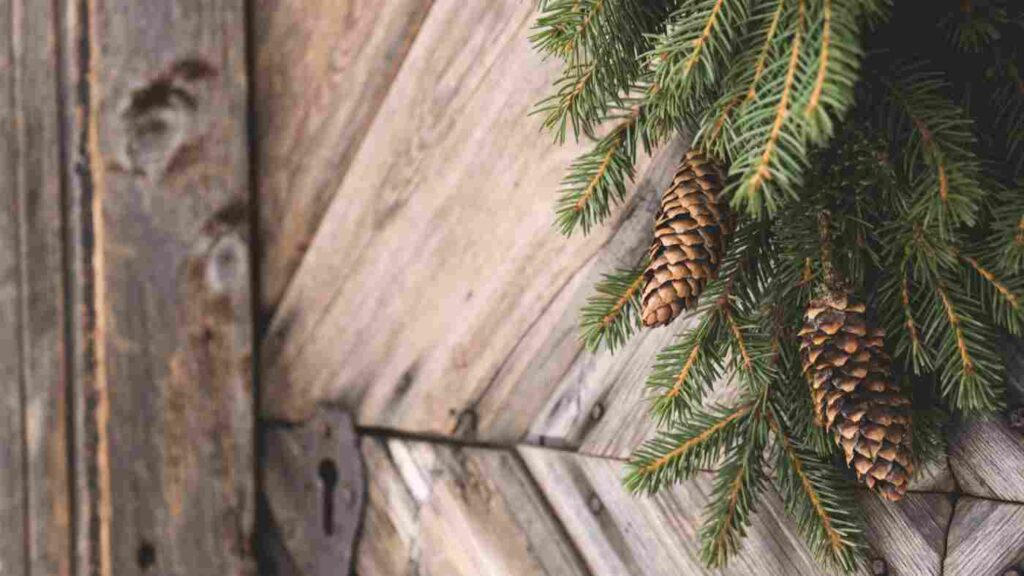
The Greeks and Romans associated Pine cones with love, lust and fertility and similar to the people in the north, couples planted a Pine tree when they married. In Taoist beliefs ingesting the pinecone seeds, resin, young buds, and needles of Pine would bring about longer life and would strengthen their bodies, protecting them from physical harm and natural aging.
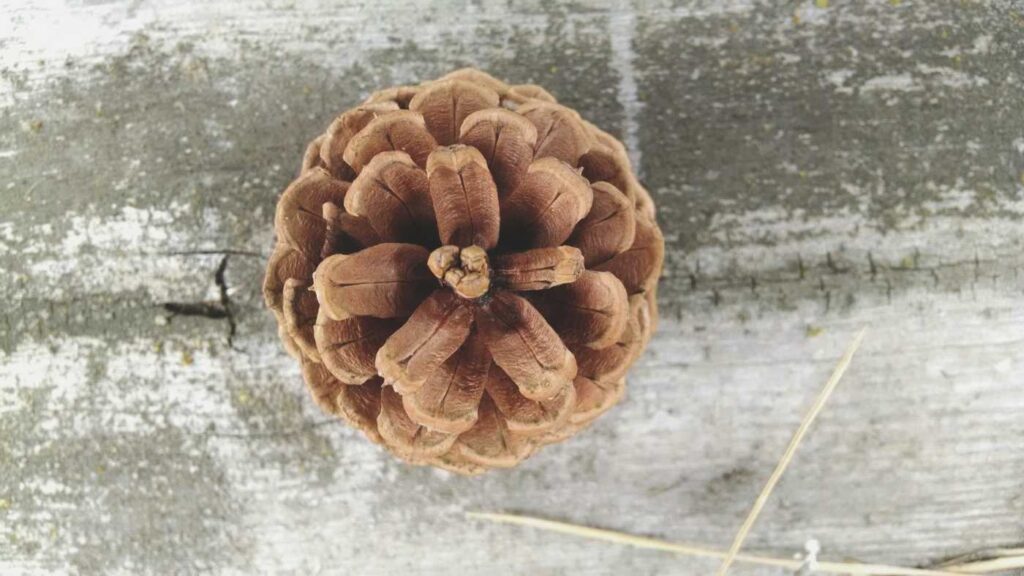
All evergreens are in mythology believed to be protective against negative energy. People in ancient Europe made crosses from needles to help keep evil out of their homes and also burned them like smudge sticks in sick rooms to strengthen those in healing. In Sweden, we have a tradition of laying branches of fir on our doorstep in winter. I always believed this was done purely to prevent slippery accidents and brush snow off the shoes and have, along with many other Swedes, often gathered bunches of fir branches to lay on my doorstep during the winters, completely unaware of their magical power. Since I gained this wisdom, entering and leaving my house always put a smile on my face and a feeling of gratitude toward this wonderful tree.

Winter Immunity
Pine and fir especially, are during midwinter more nutritious than in other seasons with increased levels of vitamin C for the immune system and essential oils that stimulate blood circulation. These are terpene-rich volatile oil compounds which give the Evergreens their wonderful forest smell and taste and are also what protect them from bacteria, infection, and fungi. Harvesting their needles and resin while enlivened by their invigorating scent is true bliss to the soul when times are cold and dark.
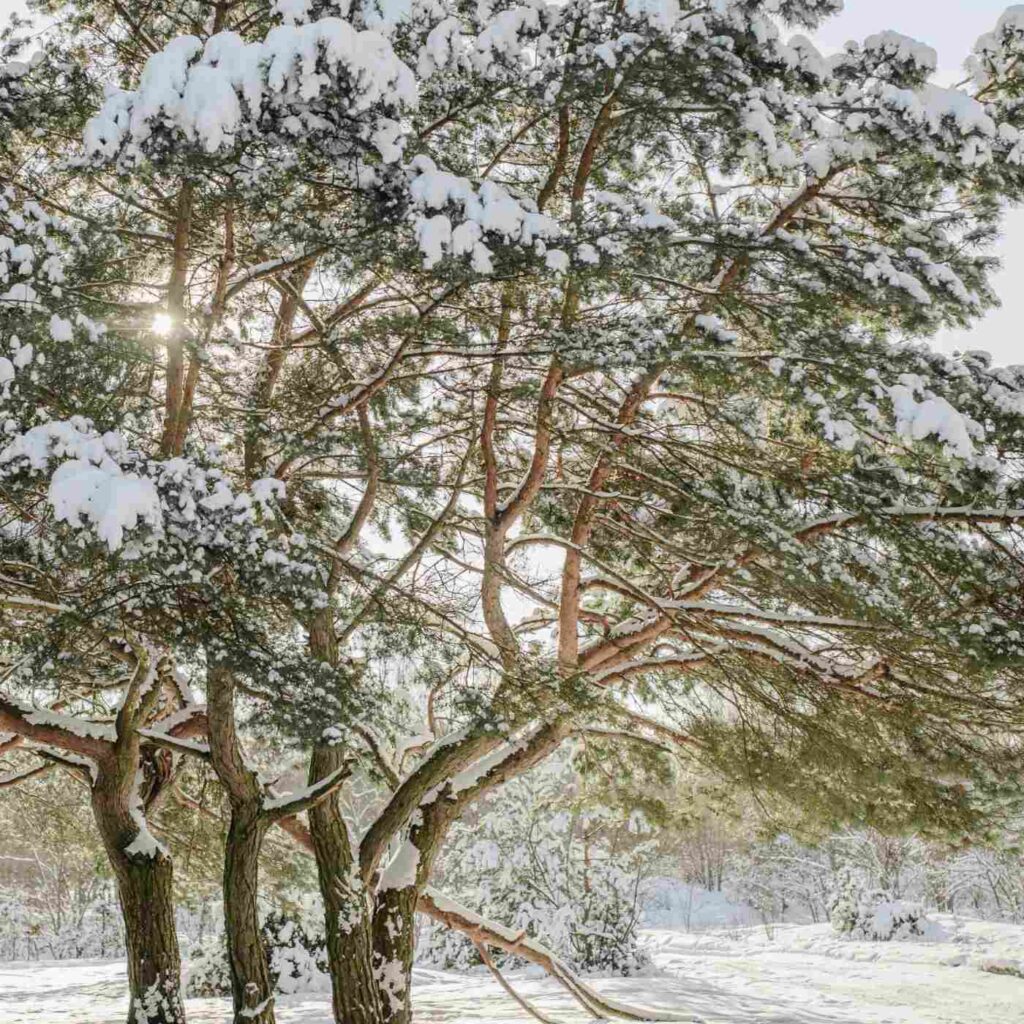
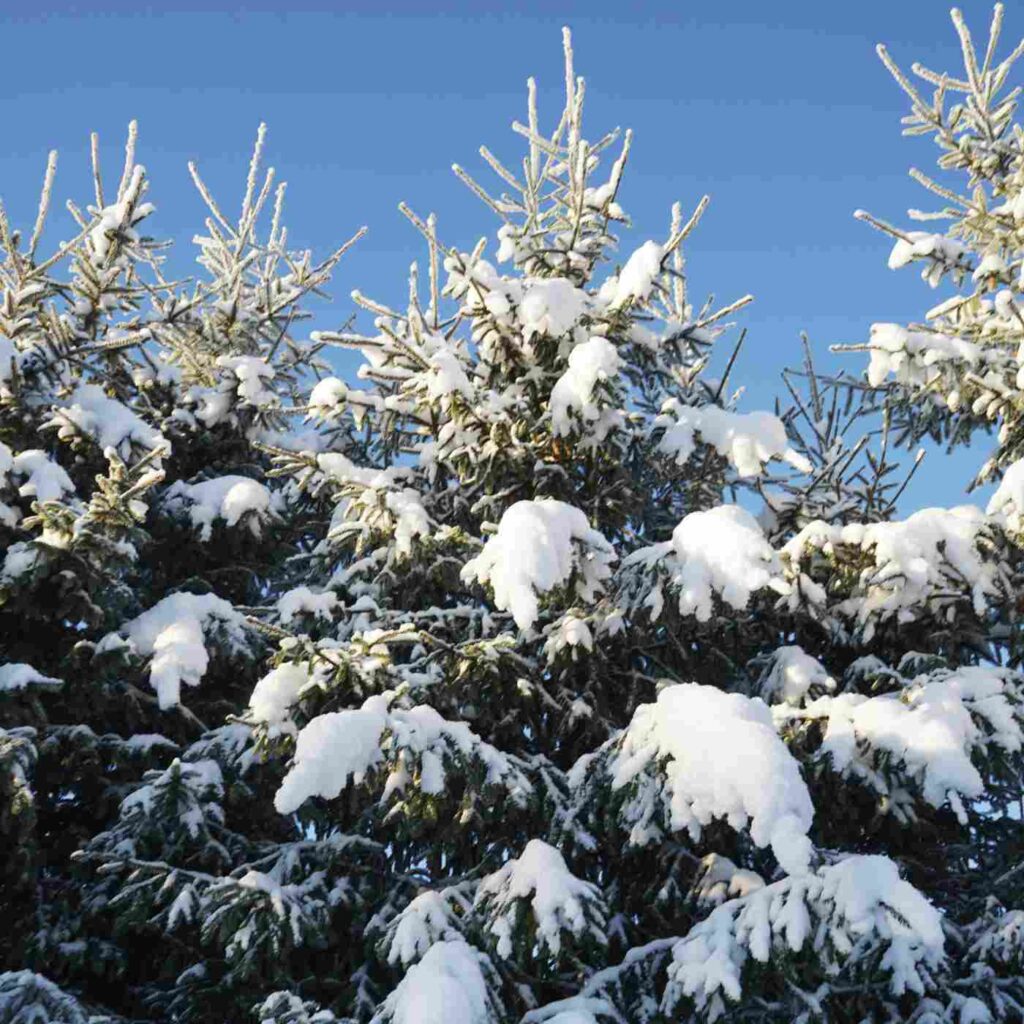
Just like the oils in evergreens which are antiseptic and antibacterial protect them from harm, likewise, they are immune boosters and protectors to us humans by helping our bodies fight infection and inflammation. They are naturally warming and help rid the body of stagnation and inflammation by improving blood circulation and drainage of metabolic waste. They also thin thick and stubborn mucus in the airways which is sometimes experienced during a cold and thereby clear the upper respiratory system making breathing effortless and smooth again.
Needles
Needles can be harvested at any time of the year. They are super rich in vitamin C and antiseptic and antibacterial oils. The older, darker needles have a higher vitamin C content but the fresh, new growth will taste a bit better and can be eaten fresh. Tea, water steams, honey, -oil -and vinegar infusions can be made with fresh needles and used regularly to keep well in the winter months, treat a cold or improve joint mobility and blood circulation. When harvesting needles, remember that the tree also needs its needles to thrive and protect itself hence only pick a few needles from each tree. Continue reading for preparation and recipe ideas.
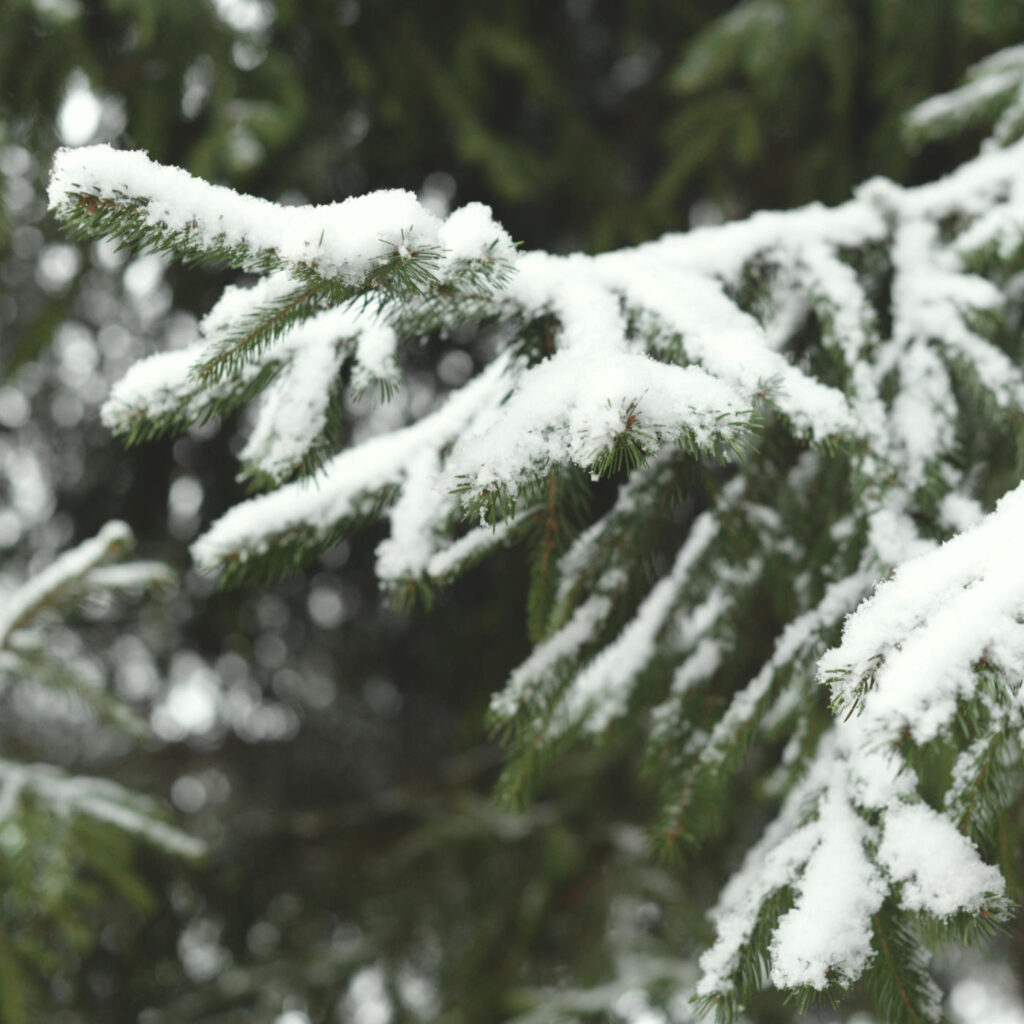
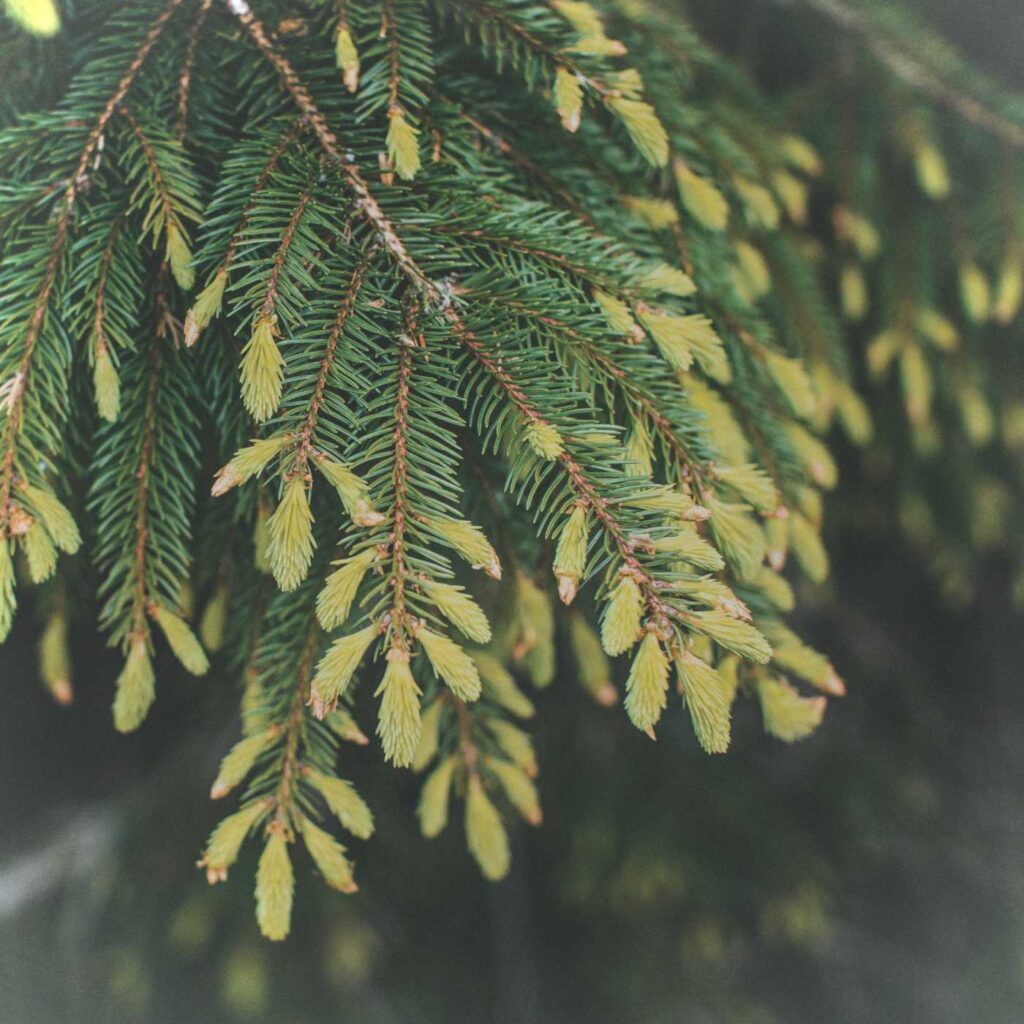
Resin
Resin is the sticky syrup-looking liquid you may have spotted on evergreen tree trunks and cones and is packed with healing terpene-rich volatile oil compounds making it smell divine. Resin works as the tree’s plaster for when it’s been injured and must therefore at all times be collected in a way that doesn’t impact the recovery of the tree. Identify where the injury of the tree is, and collect only resin that has dripped down from it. Never be greedy and collect resin that’s covering the wounded area, that would be extremely cruel to the tree who’s working hard to heal. The resin can be used to make healing salves or left to solidify fully and used as incense to invigorate the spirit. Continue reading for preparation and recipe ideas.
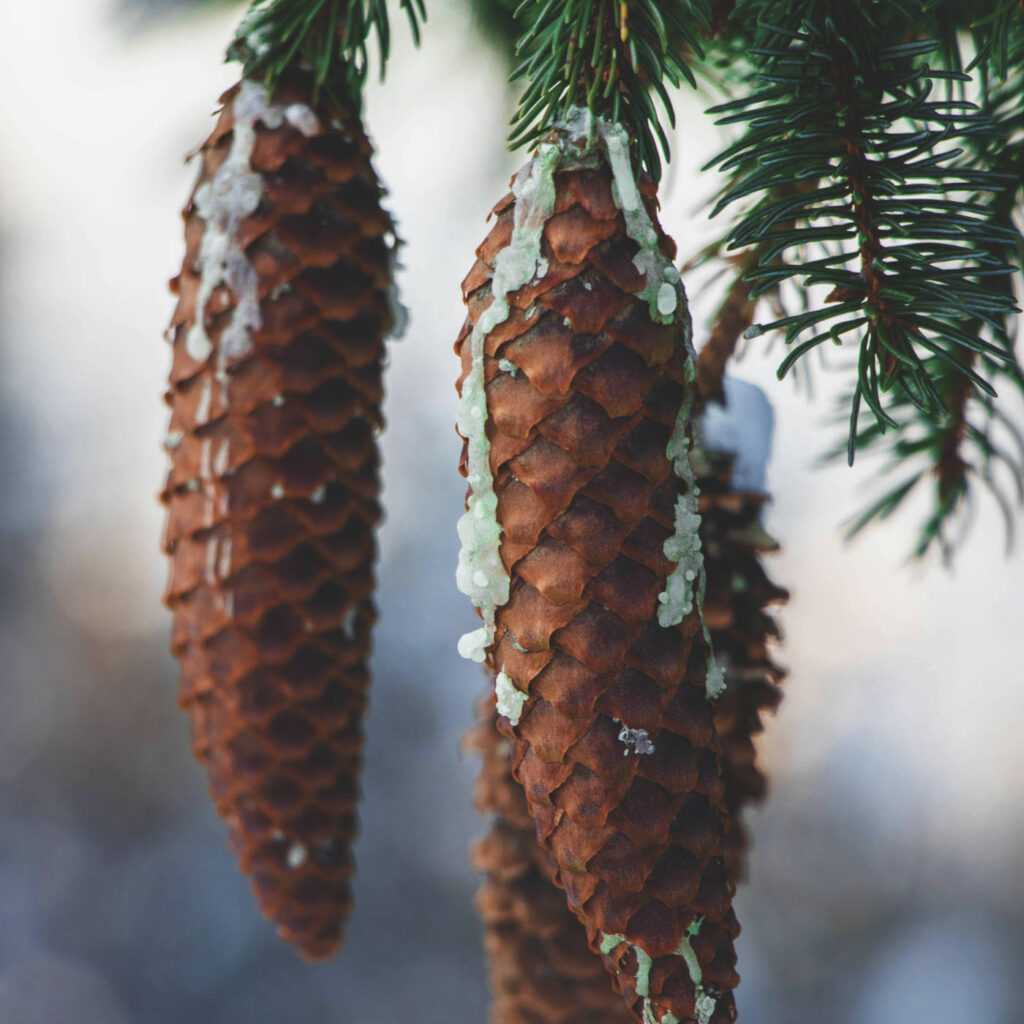
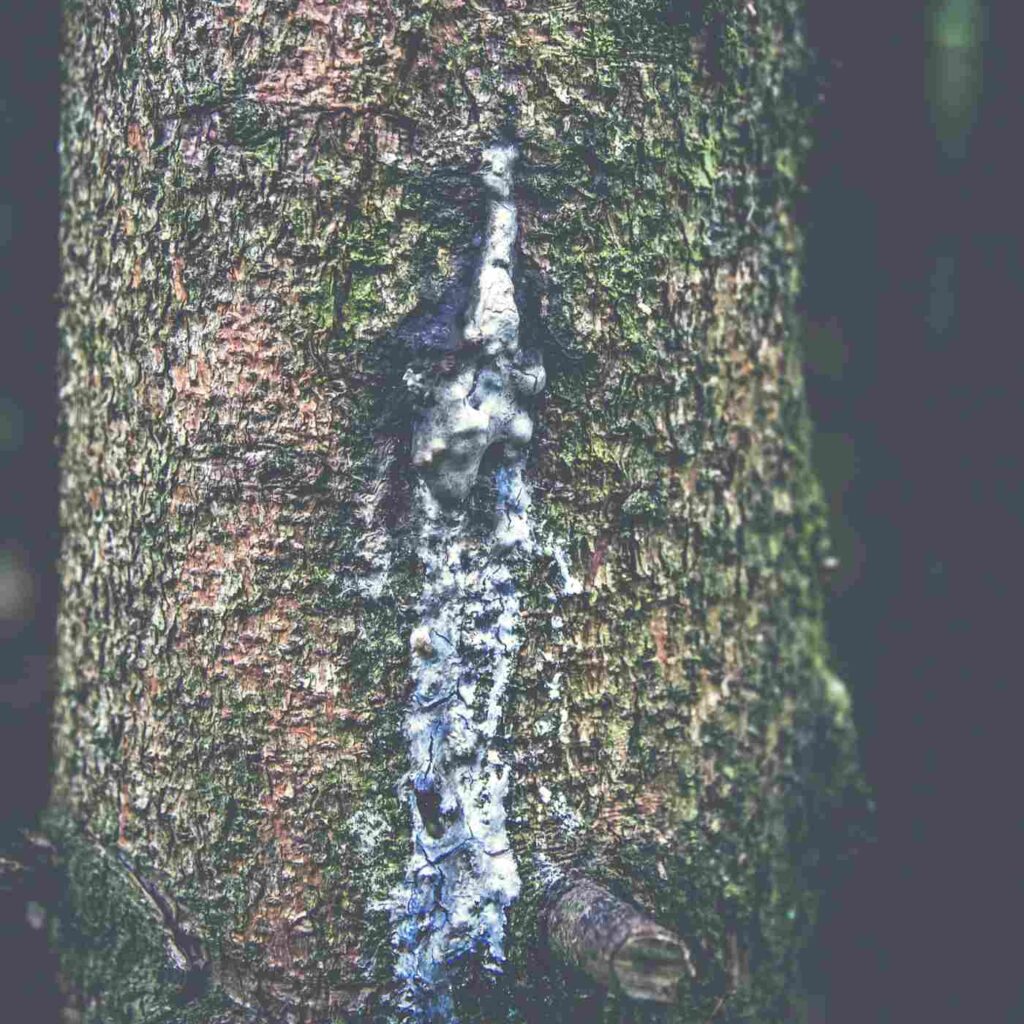
Psychological, Emotional and Spiritual
A lot of the evergreen trees’ history of promoting mental clarity, positive emotions such as self-acceptance and confidence, purifying the spirit and reawakening our instinctive connection to life is highly linked to its scent alone. Compared to our other senses, the sense of smell is our most primal and instinctual. It has a remarkable ability to evoke emotional responses that greatly influence our well-being. This is due to the direct connection between our scent receptors and the Limbic System in the brain, which is in charge of recording our emotions, memories, and survival instincts.
When we breathe in the scent of pine and fir, they have a way of making us feel refreshed and invigorated while at the same time calm and relaxed. The aroma has uplifting qualities and has been shown to improve cognitive function and enhance mental clarity. Furthermore, studies have found that inhaling the scent of pine helps lower levels of the stress hormone cortisol in the body leading to a more harmonious state of being.
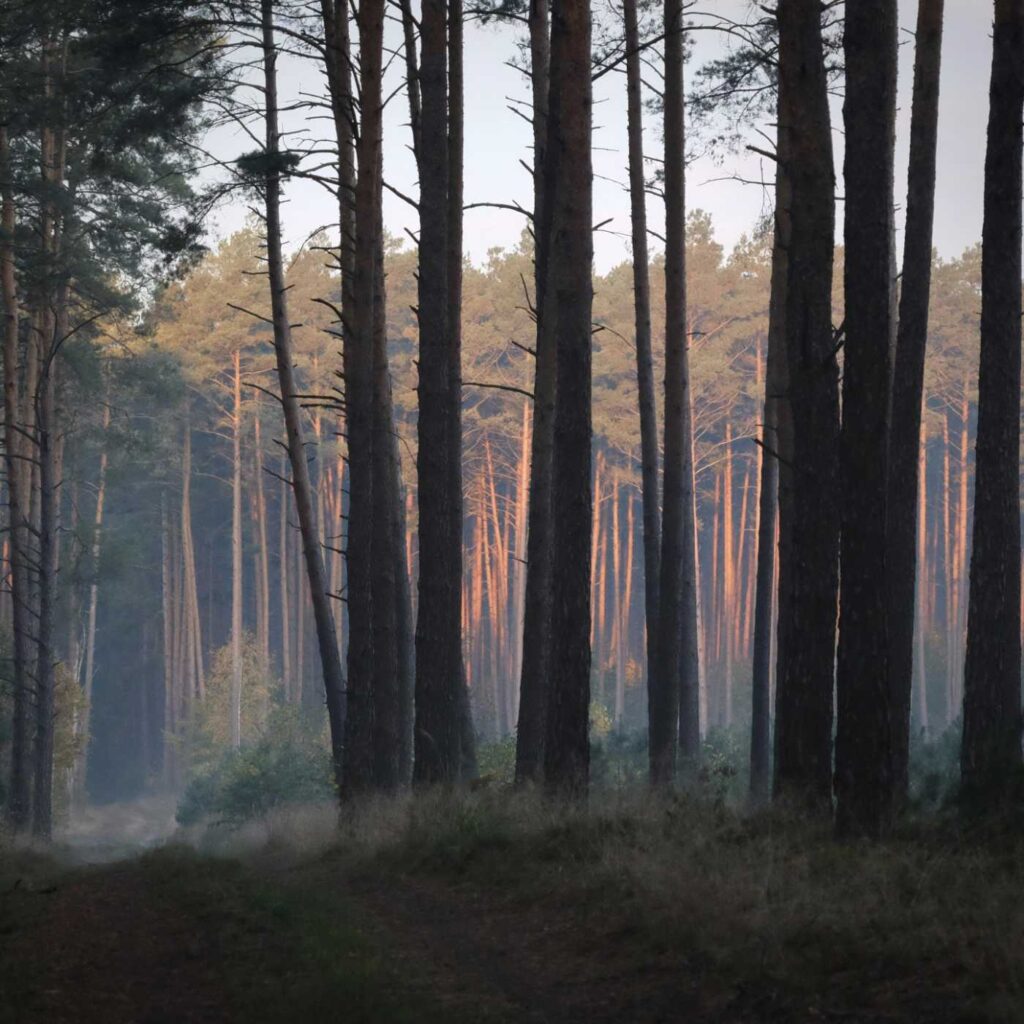

In the wintertime when life tends to feel dark and dull, spend time in evergreen forests, decorate your home with branches, burn resin or needles, or prepare water steams with added needles to inscentify your home and you’ll quickly notice the positive effect the evergreens have on your general wellbeing. It is pretty mindblowing when you pay attention to it.
Bathe in Evergreen
Remember when the Japanese “introduced” us to forest bathing to inspire people to reconnect with nature and the forest? An amazing initiative which evidently has shown life-changing results in many stressed and overwhelmed people. However, time spent in nature and forests as medicine is not a new concept and it was in the olden times apparently not an uncommon advisory by physicians to spend more time amongst pine and fir trees for healing. Hippocrates is even known to have stated that – “nature itself is the best physician”.
Just like bringing evergreens into our homes for decoration and medicine-making for various health purposes, spending time in evergreen forests will give you even more healing. In the forest and with the help of the sun the trees are breathing out the immune boosting, energising and feel-good activating terpenoids into the atmosphere which when we inhale absorb into our whole being.

Go deep into the forest and allow yourself to absorb all its goodness, contemplating with every deep breath the wonderful gift of strong immunity, clear thinking, uplifted mind, protection, energy, strength and life that the trees offer. The benefits are deeply profound.
Preparations and Recipes
Needle tea
Drinking strong pine tea about 3+ times a day can support the body in treating coughs, and relieve chest congestion and sore throats. A cup will also improve mental clarity and make you feel more harmonious. The hot water will destroy some of the vitamin C content in the needles. For best medicinal effect, cover your tea while it’s brewing.
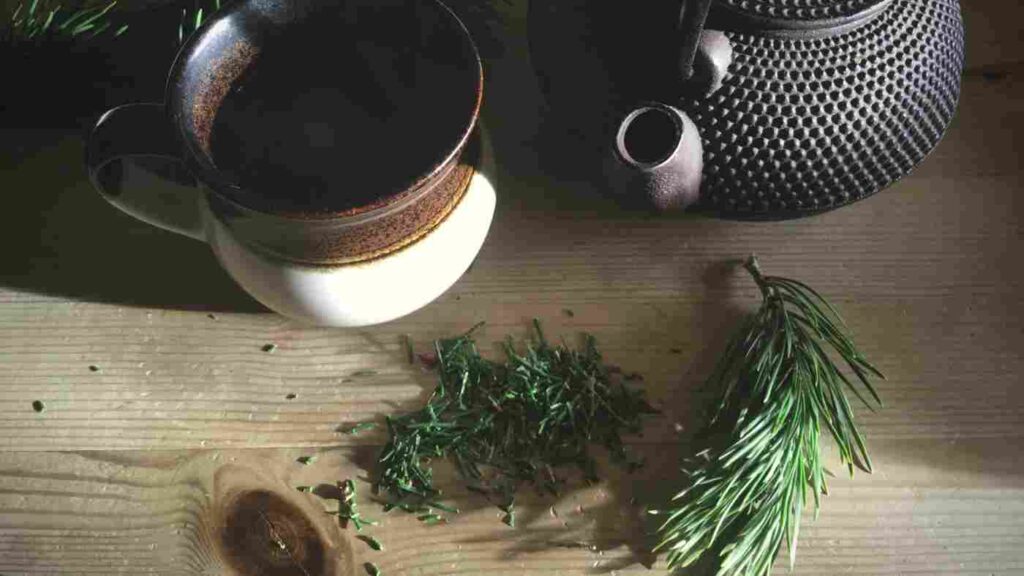
For one cup of tea, use two tablespoons of fresh chopped-up needles steeped in boiled water, cover and let brew for about 15 minutes. Dried needles can be used instead of fresh with a ratio of one tablespoon to one cup, however, fresh needles do, in my opinion, make a nicer tea.
Needle steam
Make a fresh needle face steam inhalation to help clear a blocked nose or sinuses. Have a pot filled with fresh needles, preferably chopped, and hot water. Bring your face about ten centimeters directly above the pot and drape a towel over the back of your head and inhale the fresh evergreen steam. Stay here for up to ten minutes, depending on how your skin reacts to the steam.
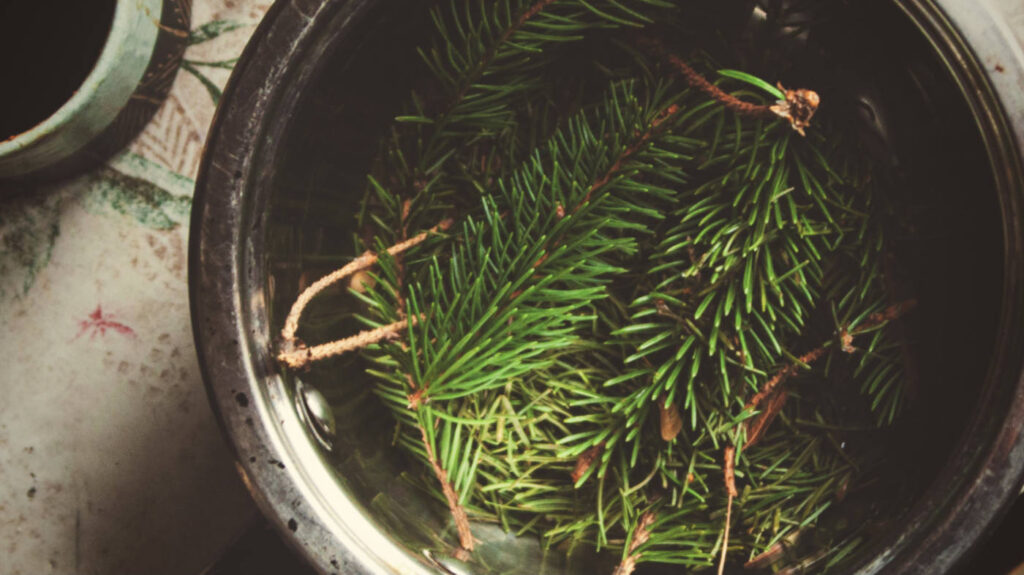
You can also freshen up your home with a needle steam simmer pot. The preparation is the same as for face steam, only now you leave the pot on the stove to simmer for the needles to release their divine aroma into your home. This also adds moisture to the otherwise dry winter air experienced in the north at that time of year as well as the medicinal properties from the terpenoids released into the air.
Evergreen syrup
Make a simple immune booster, respiratory support and cough remedy in the form of a sweet syrup which can be enjoyed on porridge, yoghurt, pancakes, in tea or whatever you can think of.
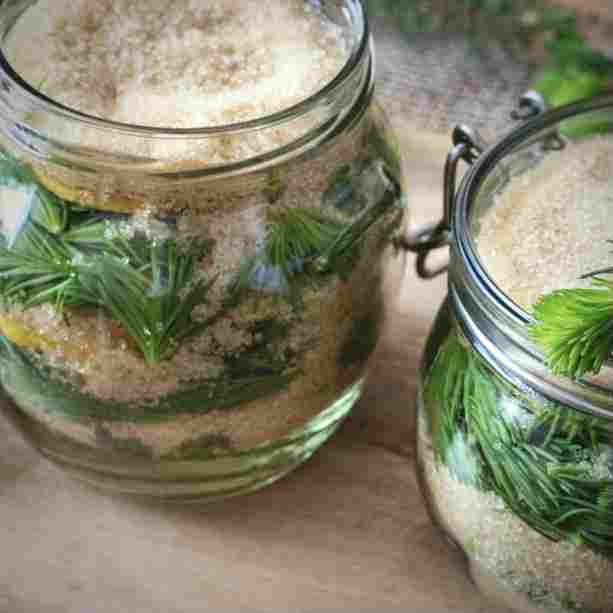
- Layer fir shoots and raw sugar in a glass jar and cover with a tightly sealed lid.
- Place the jar in a sunny window for about 1 – 2 months and turn it every now and then. With time the needle shoots will release their liquid to be absorbed into the sugar.
- Pour the sugar mix into a pot and bring to a boil to dissolve the sugar.
- Strain and discard the shoots, and pour the syrup into a glass bottle.
- Store the finished syrup in the fridge
The same recipe can be made using immature green pinecones instead of fir shoots. These are generally best harvested in early spring just like fir shoots.
Needle-infused oil
Fresh pine or fir needles infused in oil have a long tradition of being massaged for improving circulation and heat in the body, mobility in the joints, and easing muscle tension. The amazing forest scent that’s drawn out of the needles into the oil will enliven a tired and unfocused brain and bring relaxation to the otherwise stressed and overwhelmed person.
Read my article How to make a healing herb-infused oil for step-by-step directions on how to make a potent pine or fir needle massage oil. The oil can be massaged onto cold hands and feet, sore muscles from exercises, stiffness, and inflamed joints. Adding a few drops to a hot bath or simply smelling the oil will leave you feeling refreshed and harmonious.
Needle-infused vinegar
Infusing fresh evergreen needles in apple cider vinegar will make a beautiful nourishing and refreshing salad dressing when combined with olive oil and honey. The pine vinegar can also be used as a hair rinse to keep the scalp healthy from fungal infections and eczema. Read my article How to make herb-infused vinegar for step-by-step directions on how to make and use pine or fir needle vinegar.
Furthermore, pine and fir vinegar can be used for cleaning because of their antimicrobial properties and fresh scent. For this purpose, I prefer to use white spirit vinegar. Fill a clean spray bottle halfway with the pine-infused vinegar and the remaining half with cooled boiled water. Use as an all-purpose cleaning spray though avoid using on metal, natural stone, granite, marble, quartz, or the like as can cause erosion.
Resin incense
Burning pine resin in your home will purify the air and is traditionally believed to remove negative or stagnant energy and create a harmonious, grounding and uplifting atmosphere as well as strengthen the nerves and give courage and emotional strength. The scent improves the mood by clearing the mind of stresses, energizing the body to help eliminate fatigue, enhancing concentration, and promoting a positive outlook. Best of all, it smells divine.
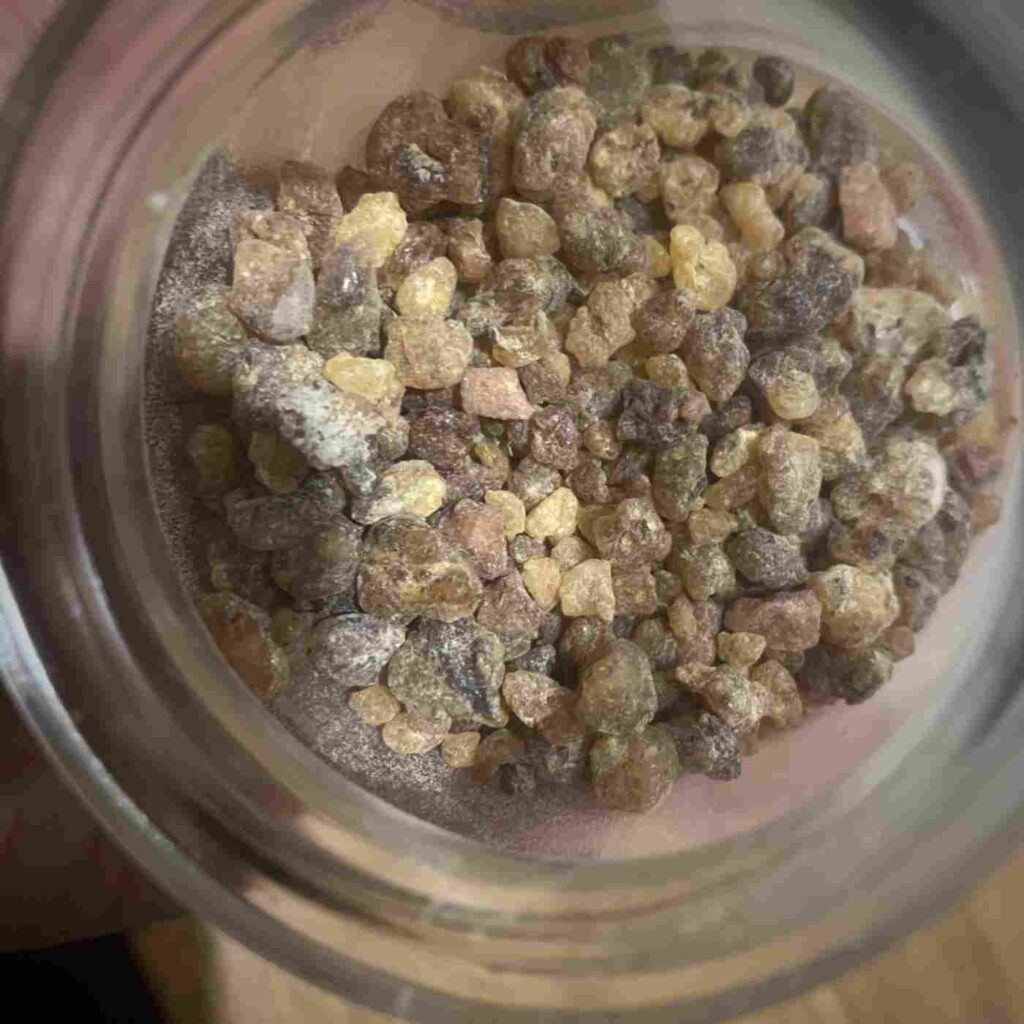
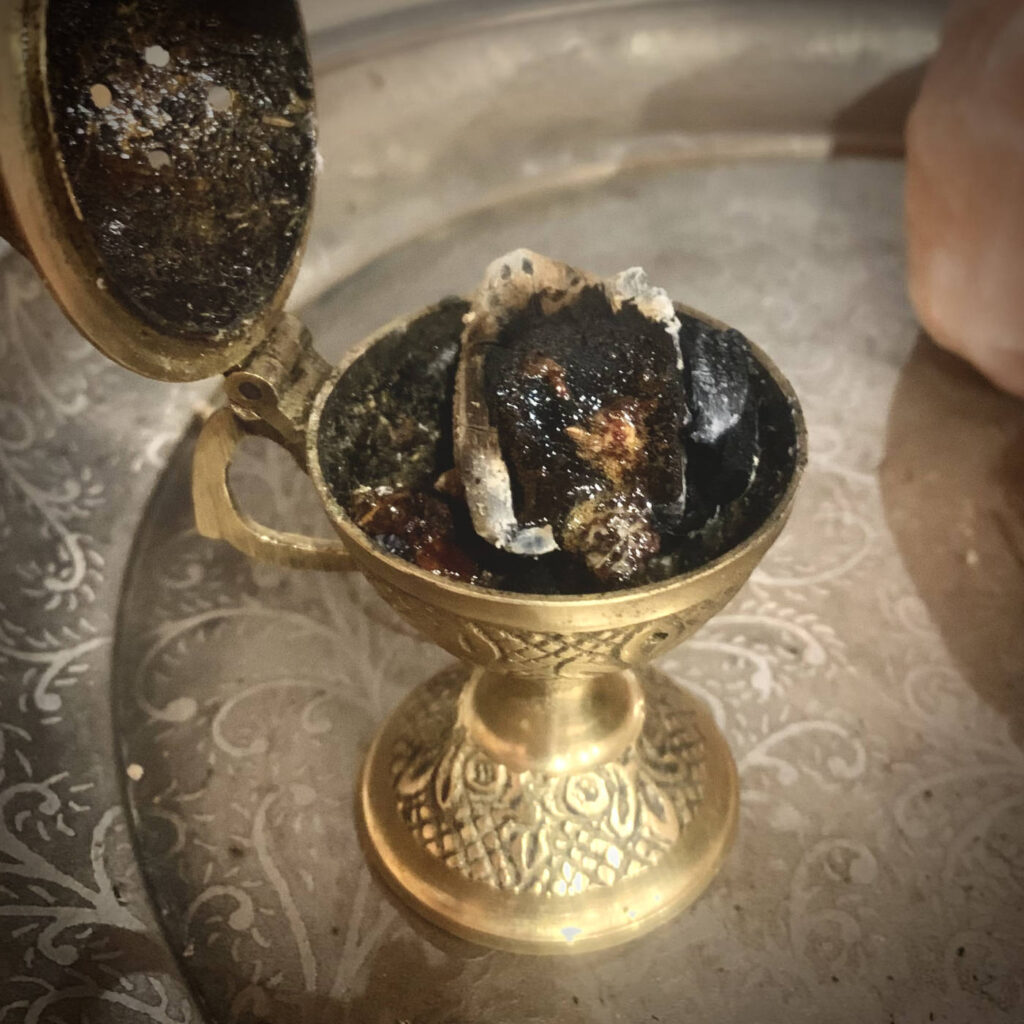
All you need to do is leave the resin that you have collected to solidify completely and then burn on a piece of charcoal in an incense burner or ceramic bowl filled with sand. I leave my resin in a paper bag and break it apart from time to time as it solidifies. It takes about a year for the resin to become fully solid and ready to burn.
Resin salve
Fir and pine resin salve has for centuries been made and used by nordic habitants and especially the indigenous people of northern Scandinavia and Russia; the Sámi. The salve is used on the skin as an ointment to treat a wide range of complaints including cuts, scrapes, chapped and itcy dry skin, hardened skin (calluses), fungal infection, sore muscle and joint pains. It can be rubbed on the chest and back to ease respiratory problems and coughs, and is amazing to use on your dogs cracked paws. With all its versatile uses this salve is so wonderful and really worth making to have on hand at all times.
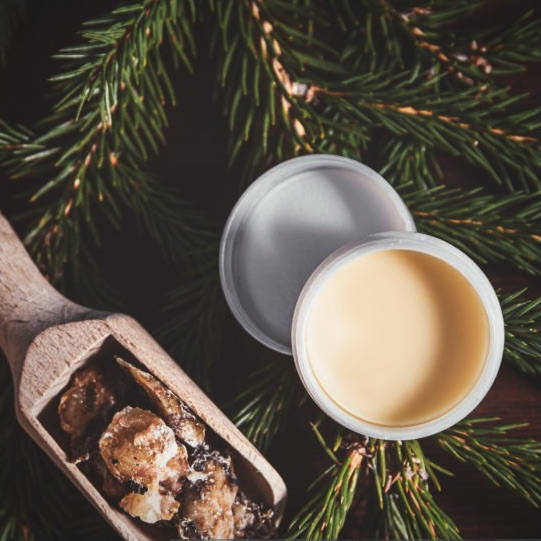
RECIPE
2 parts pine or fir resin
2 parts olive oil
1 part beeswax or 1/2 part candelilla wax
1. Prepare a water bath using a stainless steel bowl that will from now on be your designated resin salve-making bowl. The resin gets very sticky as it begins to melt and easily becomes difficult to scrub off.
2. Add resin and oil to the bowl and heat together on low heat until the resin melts. Strain the mixture through a coarse coffee filter or strainer to remove any unwanted bits of bark or dirt.
3. Return the mixture to a water bath, add the wax and gently heat until it has completely melted. Remove the mixture from the heat and stir gently with a spatula until it just about begins to thicken and pour it into tins or jars to solidify completely.
Contraindications
Most evergreen trees are safe to use, providing they are the edible and medicinal kind. Some pine trees, ponderosa pine (Pinus ponderosa) being one, may stimulate uterine contractions and should be used with caution by pregnant women. Furthermore, some people may experience allergy symptoms from evergreen pollen.
Code of conduct
As always when wildcrafting and using nature’s resources, harvest with awareness, gratitude, and respect. Only pick a few needles, cones and resin from each tree and leave enough for them to recover and flourish, reproduce and for other animals to survive on. If you’re collecting branches for decorating with, look for trees that have fallen to the ground or trees that are well established and harvest sparingly. Only harvest from trees far enough away from roads and areas prone to fumes and toxins.
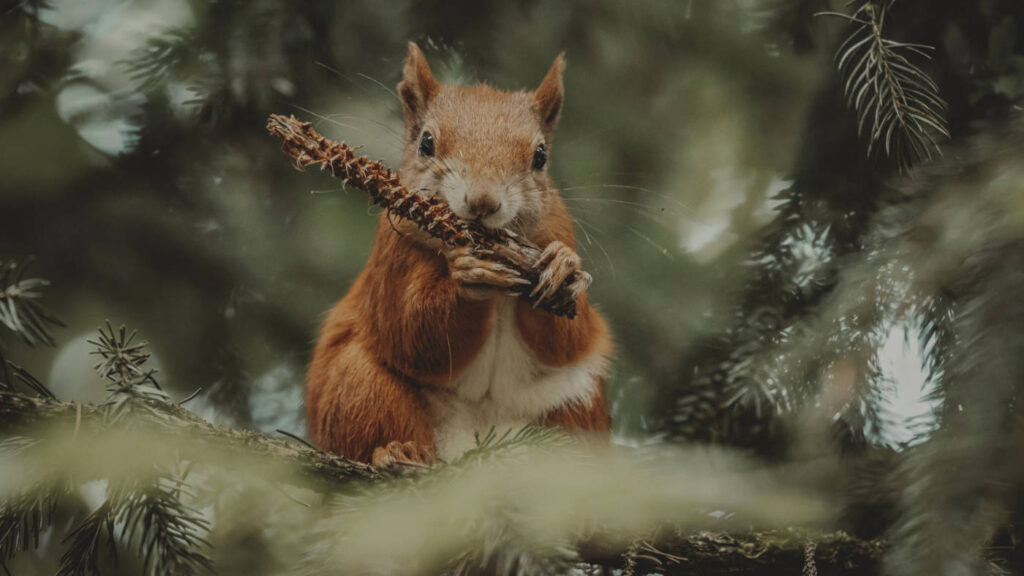
Love, Sarah Águsta



